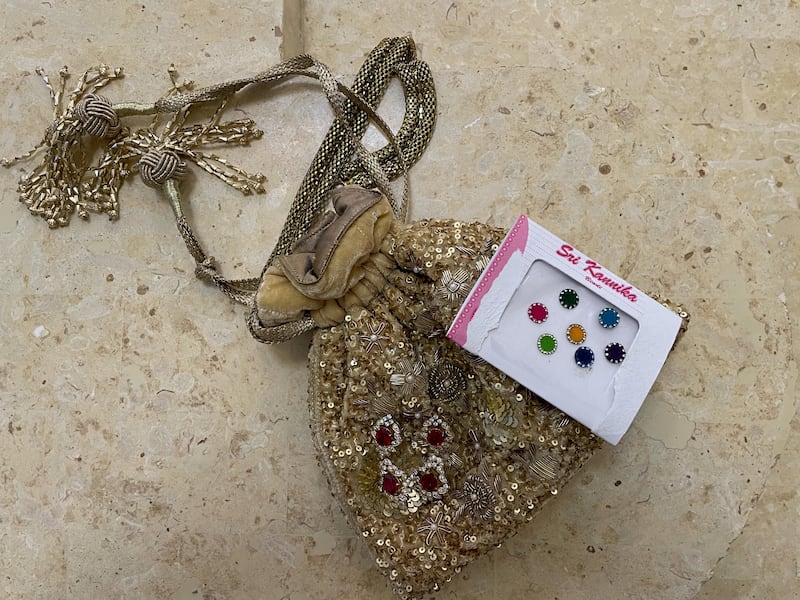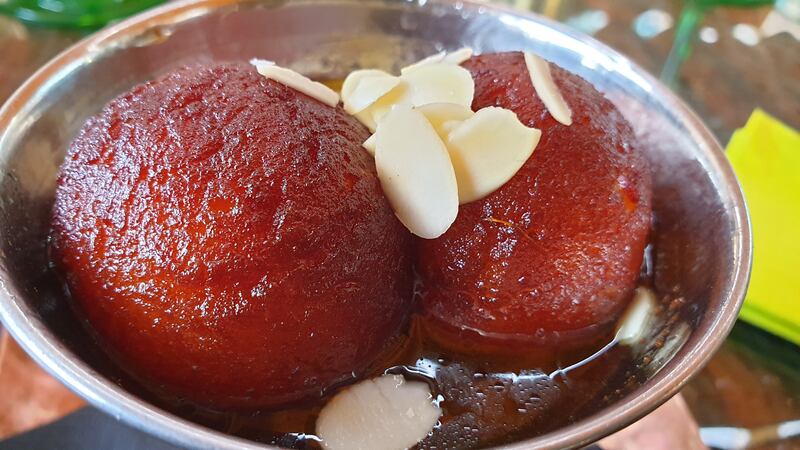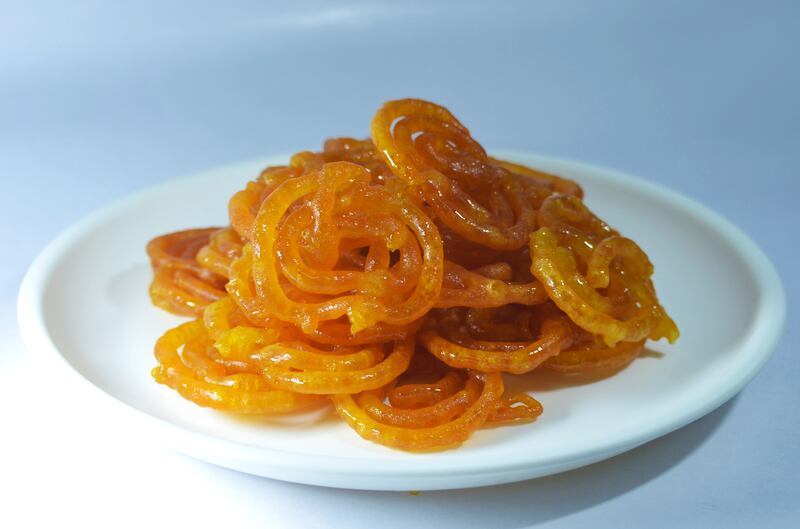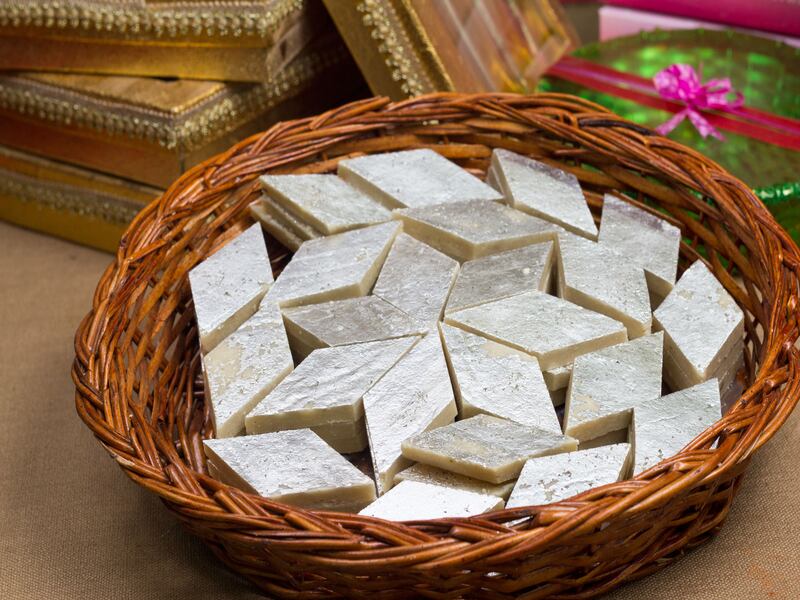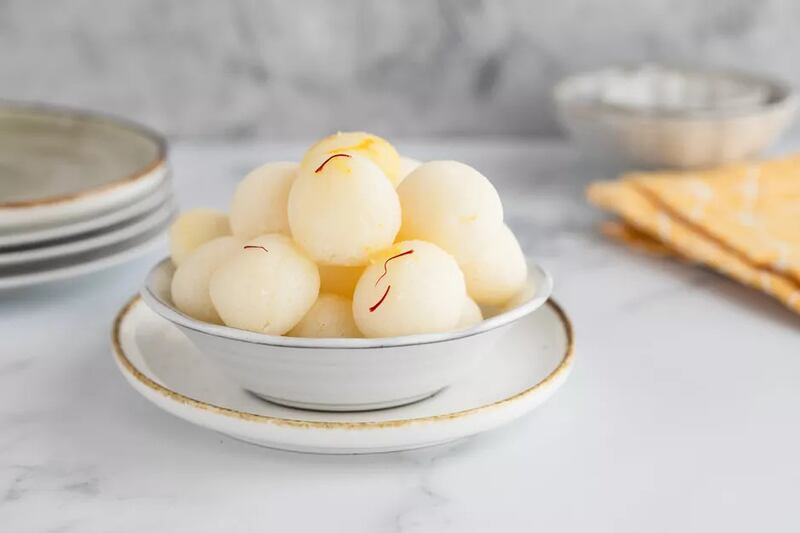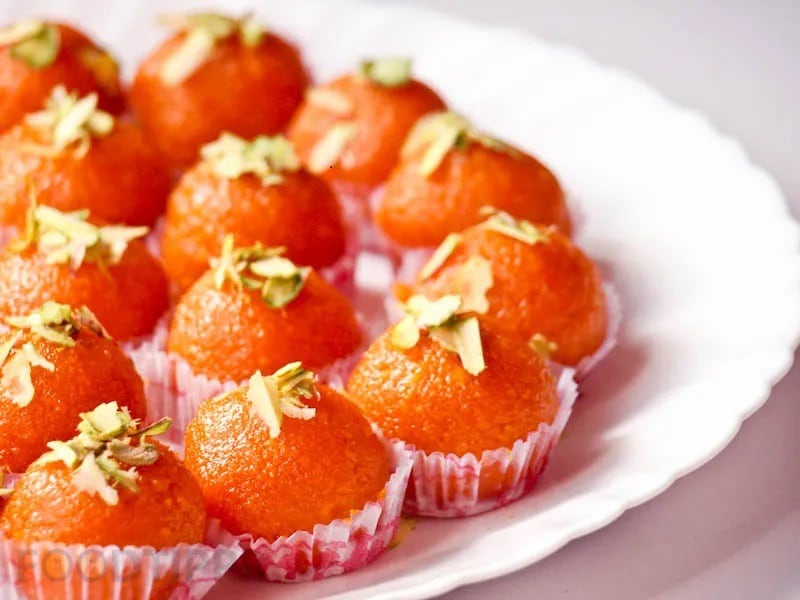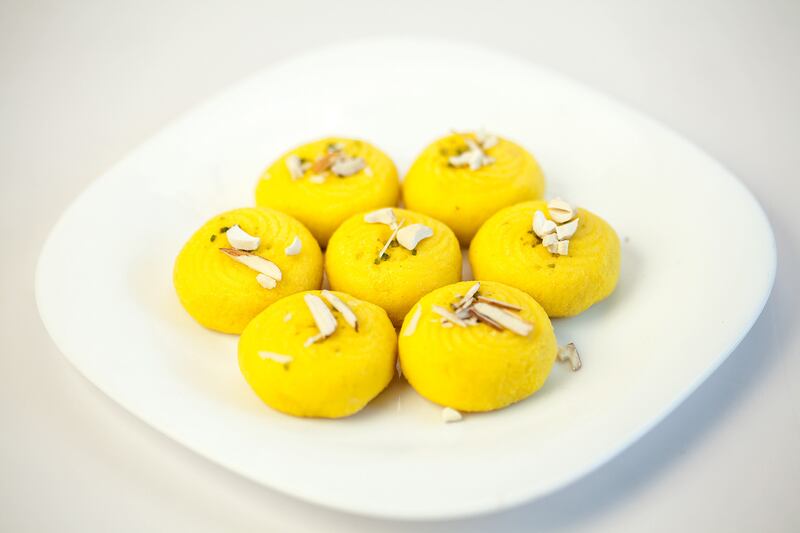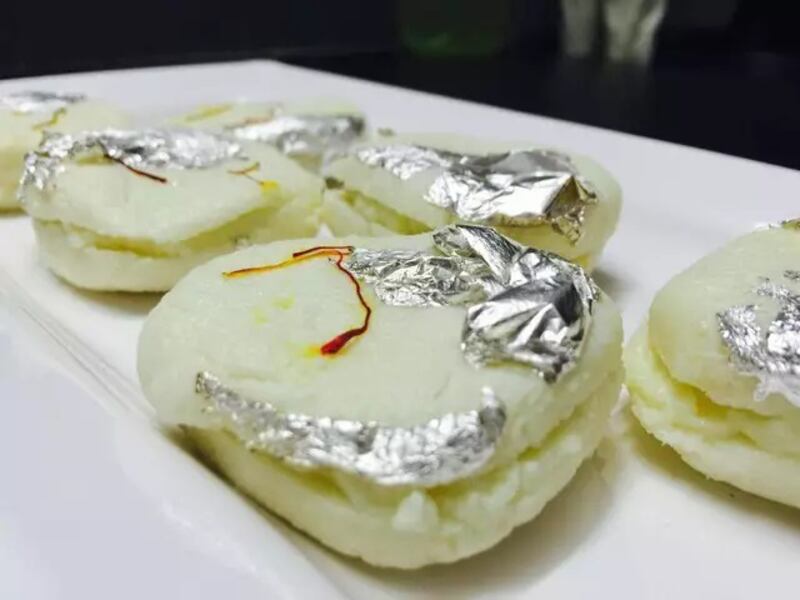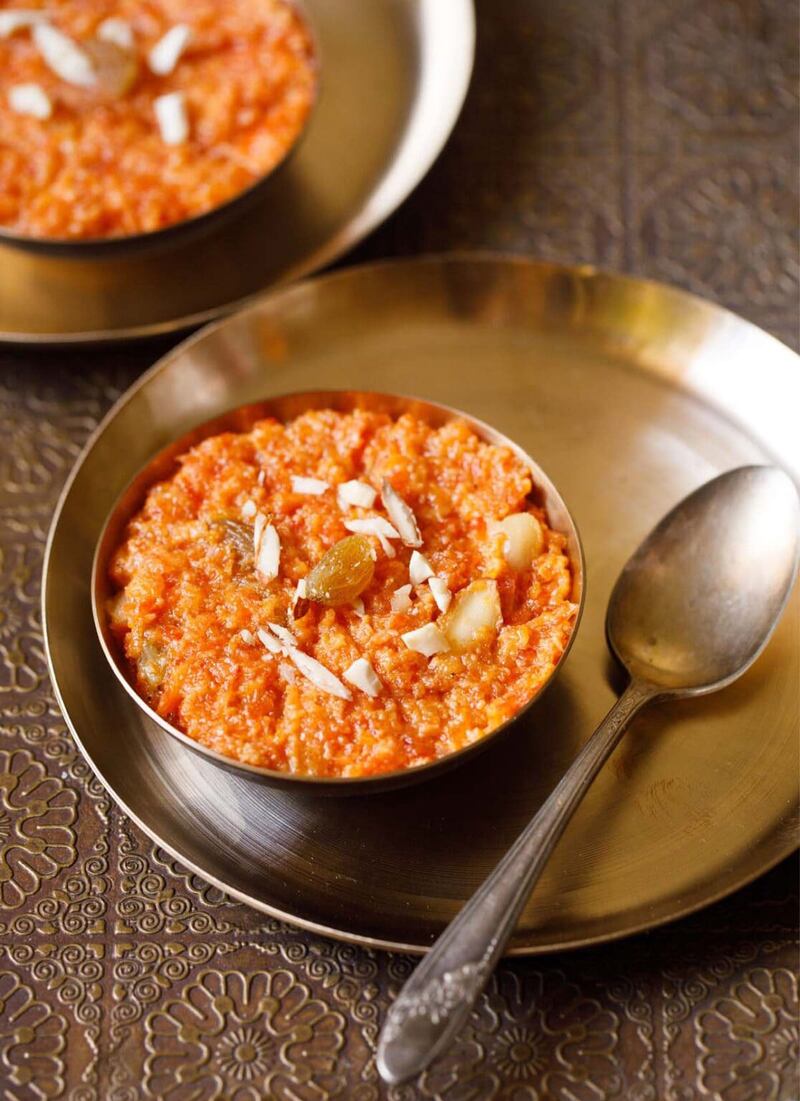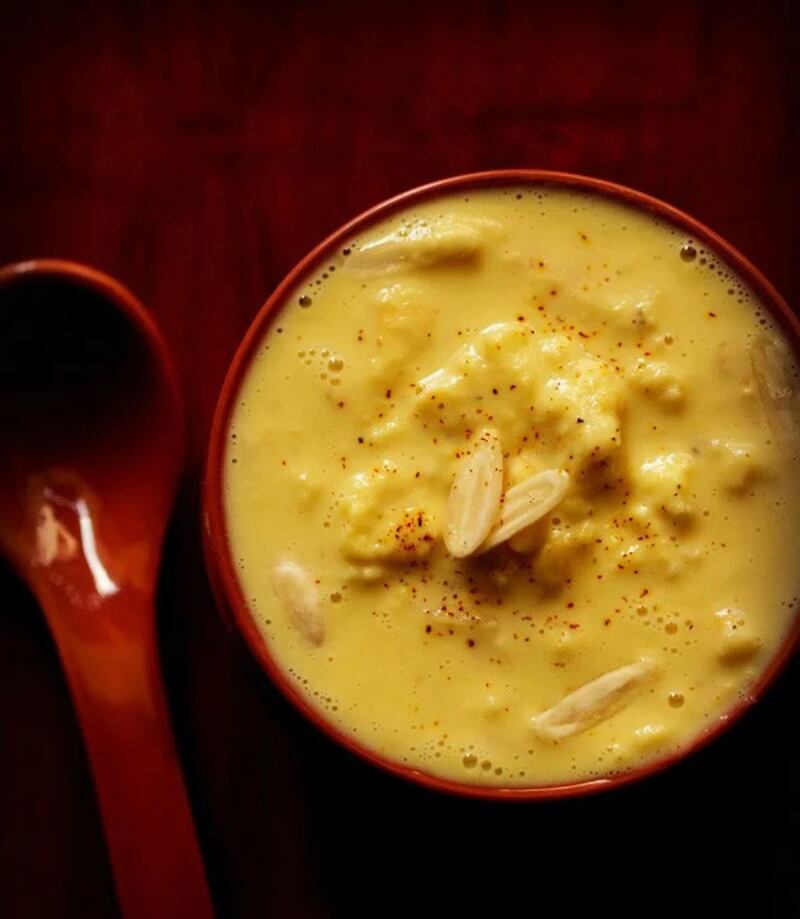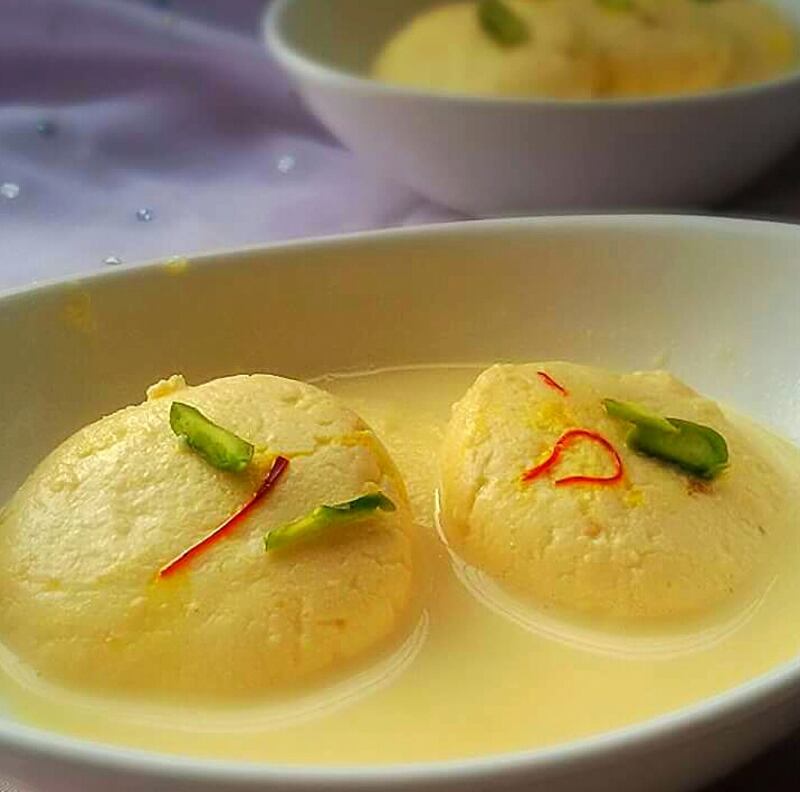I possess exactly one pair of silver payals. And I wrap them around my ankles precisely once a year. The same goes for the colourful bindis stashed away in the bottom drawer of my dresser. And the embroidered potli that holds said bindis (and not much else), should one get swiped off my forehead during my sister-in-law's annual Diwali bash. I will, after all, be air-kissing close to 100 guests.
The Festival of Lights is (almost) here. And like millions of Indians, finding the right festive garb is high on my to-do list. As is cleaning the house from top to bottom to entice Lakshmi, the goddess of prosperity, to cross my threshold, and buying sweets by the platterful for gifts and eating purposes.
Buying new clothes is considered auspicious during Diwali, because the festival represents fortuitous beginnings. Several designer trunk shows come to town and desi stores in Old Dubai are ablaze with outfits encrusted with sequins, crystals, mirrorwork and even faux gemstones. All the more difficult to find one, though, if you’re on the prowl for apparel that is contemporary (not for me sleeves of pearls tipped with diamantes), wearable (sashaying about in a 10-kilogram lehenga isn’t my strong suit), and still manages to get a nod of approval from dozens of bling-tastic aunties.
Most years I rely on the intricate embroidery skills that Indian tailors the world over have mastered. I pick chikankari kurtas from Lucknow, with the simple white-work floral embroidery standing out against a maroon brocade or a yellow muslin.

Another time a Rajasthani gota patti shalwar with silver lace and shimmering sequins was suitable. My favourite thus far is the zardosi goldwork anarkali suit in raw silk, which I donned for a mid-November Diwali. But I fear the weather won’t permit the notoriously heavy fabric this year.
And so the search continues, although I have my eye on a sari-dress that does not require endless draping, and has a thick, raw-gold border that looks lush but is lightweight.
The sari-dress is but one of the many “Indo-western” outfit options to choose from. From evening dresses with intricate embroidery, to skirts and tops interwoven with metallic threadwork, this category of Indianwear is ideal for those who want to repeat the outfit for other, less-Indian occasions. Simply forgo the bindis and jootis, and put on a beret and boots instead.
Accessories, then, go a long way towards completing a Diwali outfit. From ethnic choker necklaces and swinging jhumkas to cocktail rings that resemble the sun, sparkling jewellery (real or costume) is half the festive-wardrobe battle won.
One has to be careful not to overdo it, though. A heavily embroidered choli will clash with a statement necklace, while abstract-shaped rings and clasp bangles will snag on certain fabrics ― your own and, worse, those of others. I once spent 15 mortifying minutes disentangling my spiky square bracelet from an unamused aunt wearing a netted bustier. It was a mesh.
This is why I swear by earrings ― my weak spot and, arguably, the most effective piece of jewellery to pair with an Indian outfit, and with low chances of snag. Visible whether you’re standing or sitting, chandelier earrings lend an air of elegance and flatter most face shapes and hairstyles (just remember to prep the lobes with baby oil a few hours ahead).
Another hack I rely on is to pair a simple outfit with a luxe-looking dupatta, tassels and all. It doubles as the ornamentation against a solid colour fabric and photographs beautifully to boot.
All this planning (and agonising) aside, donning traditional garb is a great deal of fun, both for its novelty and cultural value. To those of us living abroad, Diwali provides a rare chance to pick up and put on Indian clothes in all their finery, as well as promoting a sense of community when everyone comes together to celebrate in their sparkling best.
Plus, it’s a blessing that the drapes and folds of most Indian clothes hide the evidence of all that gorging on all those plattersful of sweets, which is almost par for the course during this most hedonistic of festivals.
Scroll through the gallery below to see the mithais commonly eaten during Diwali
